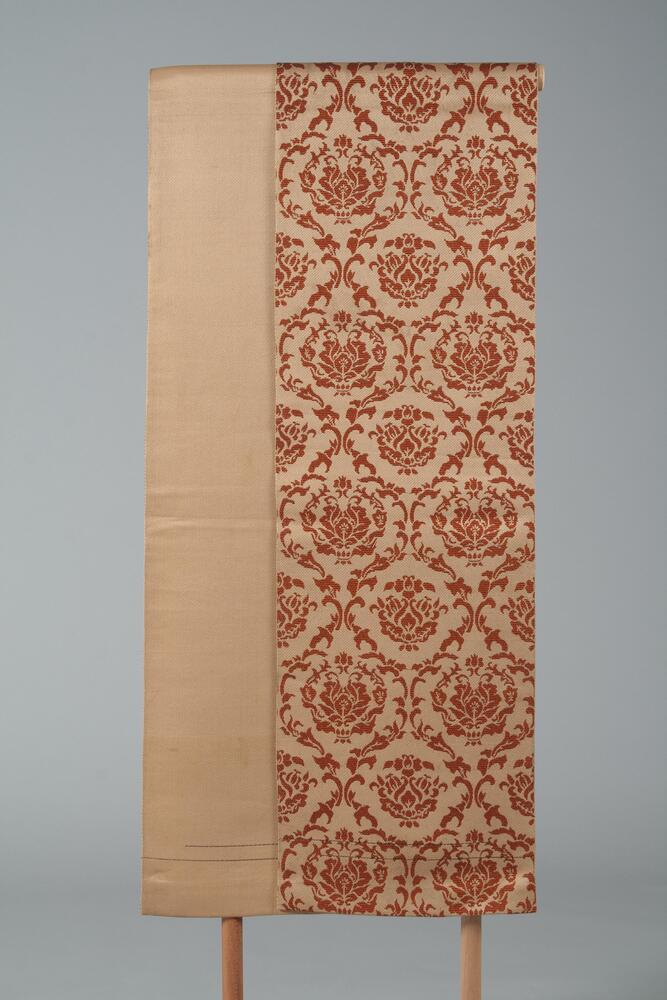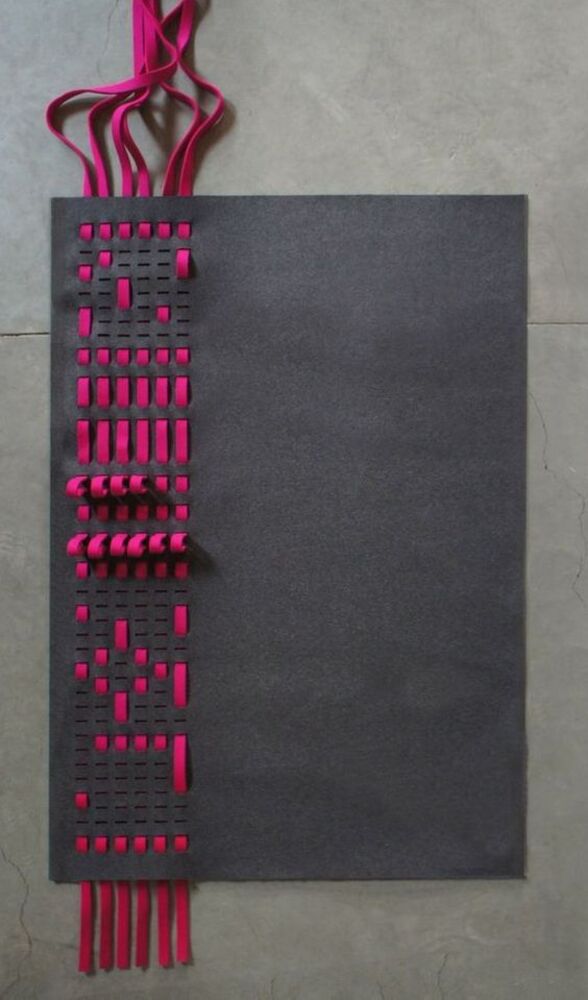Math Activity: Early Computing and Weaving
Math Enrichment Activity
This activity could take place in the museum or in the classroom. It is differentiated so educators can decide how best to adjust the level of instruction to fit students' abilities.
Objective: Students will become familiar with vocabulary (jacquard loom, matrix). Students will understand the basic mechanism of a Jacquard loom and how a punch card automates the weaving process.
Elementary / Middle School:
1. Begin by showing examples of woven materials: a scarf, a napkin, a rug. Some of these have visible threads. Some are a simple over-under weave pattern and others are more complicated organic or floral designs. In the past, weavers had to lift all the strings by hand. Then in the 1700s, people started wondering how a machine might be able to lift the strings.
2. To understand the basic weaving process, students can create a standard weave with construction paper or strips of fabric. Highlight vocabulary: warp and weft.
2. More complicated weaving is difficult to describe, so it's helpful if you are able to watch videos that show the process in action. Please see these helpful links:
Jacquard Loom: Early Computing
Loom History: Moving to a Computer
3. After watching the videos or demonstrating, show students a punch card. If possible, obtain a copy of an original Jacquard card and an IBM punch card.
4. Give each student a card with slots and strings. Ask each student to pull the long strings through the slots to create a diamond or other geometric shape.
A basic overview of how the Jacquard weaving process works:
The weaver stands by front of the loom and steps on a pedal. Threads raise. Shuttles are used to pull left and right weft threads through the stationary warp threads. The operator releases the pedal.
How the cards work: Pins are attached to metal rods. The rods attached to strings. When the strings are lifted, the weft threads can pass through. Cards give directions one at a time to the strings by allowing the rod to lift the string (if the rod can pass through a hole in the card) or not lift the string (if there is not a hole in the card).
IBM gives credit to Jacquard for introducing the concept of a binary code--either the thread is up or it is not.
4 Links
Created For
K-12 EducatorK-12 Student
Museum Visitor
UMMA Docent
UMMA Staff
University Faculty
University Student
Rate this Resource
AVG: 0 | Ratings: 0
& Author Notes
Creative Commons by-nc-saLast Updated
August 11, 2017 10:45 a.m.Report
Reporting Policy



